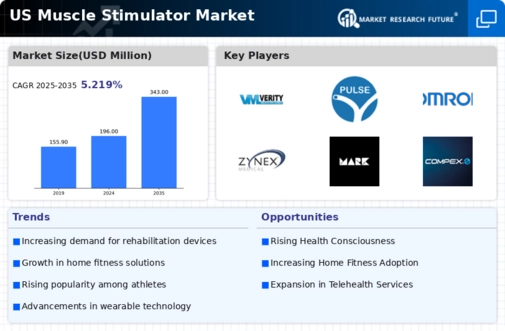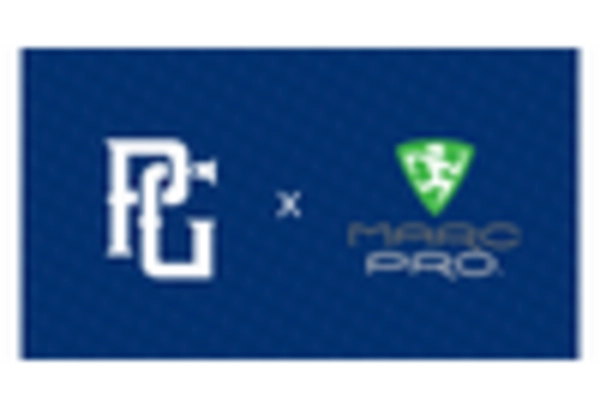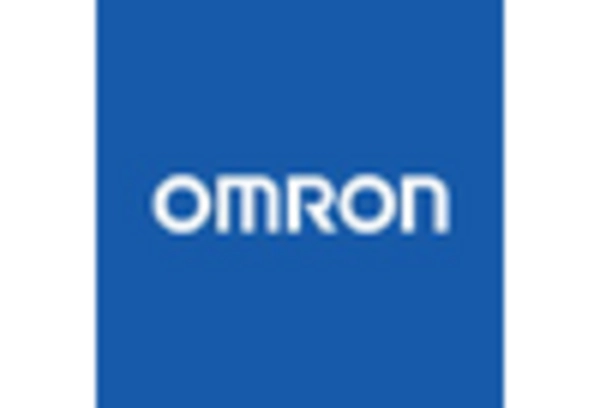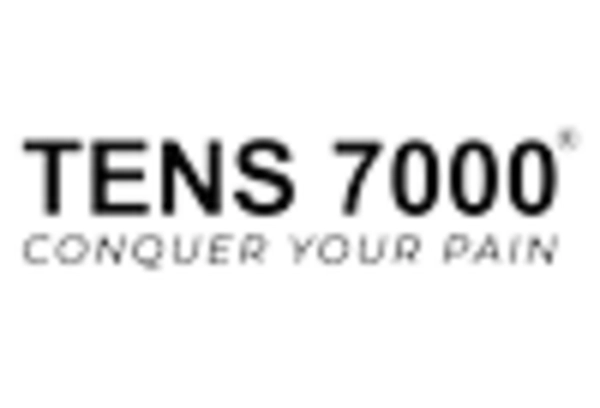Expansion of E-commerce Platforms
The muscle stimulator market is benefiting from the expansion of e-commerce platforms, which facilitate easier access to a variety of products. As online shopping continues to gain traction, consumers are increasingly turning to digital channels to purchase fitness equipment, including muscle stimulators. This shift is likely to enhance market visibility and accessibility, particularly for niche products. In 2025, the muscle stimulator market is projected to see a significant increase in online sales, potentially accounting for over 30% of total market revenue. This trend indicates that consumers prefer the convenience of online shopping, which may drive further innovation and competition among manufacturers.
Integration of Wearable Technology
The integration of wearable technology into the muscle stimulator market is transforming how consumers engage with fitness. Wearable devices that monitor muscle activity and provide real-time feedback are becoming increasingly popular. This trend is indicative of a broader movement towards personalized fitness solutions. In 2025, the muscle stimulator market is expected to see a growth rate of around 10% annually, fueled by advancements in technology that allow for seamless connectivity between devices. As consumers become more tech-savvy, the demand for muscle stimulators that can sync with smartphones and fitness apps is likely to rise, enhancing user experience and engagement.
Growing Interest in Sports Recovery
The muscle stimulator market is witnessing a growing interest in sports recovery among athletes and fitness enthusiasts. As awareness of the importance of recovery in athletic performance increases, muscle stimulators are being recognized for their potential benefits in reducing muscle soreness and enhancing recovery times. The muscle stimulator market is projected to expand significantly, with an estimated value of $1.2 billion by 2025. This growth is driven by endorsements from professional athletes and sports organizations, which highlight the effectiveness of muscle stimulators in optimizing performance and preventing injuries. Consequently, the market is likely to attract a diverse range of consumers, from amateur athletes to professionals.
Rising Demand for Home Fitness Solutions
The muscle stimulator market is experiencing a notable surge in demand for home fitness solutions. As individuals increasingly prioritize health and wellness, the convenience of at-home workouts has become paramount. This trend is reflected in the growing sales of muscle stimulators, which are perceived as effective tools for enhancing muscle recovery and performance. In 2025, the market is projected to reach approximately $1.5 billion, driven by the desire for accessible fitness options. The muscle stimulator market is likely to benefit from this shift, as consumers seek innovative ways to integrate technology into their fitness routines, thereby enhancing their overall exercise experience.
Increased Focus on Pain Management Solutions
The muscle stimulator market is increasingly recognized for its role in pain management solutions. As the population ages and the prevalence of chronic pain conditions rises, there is a growing demand for non-invasive treatment options. Muscle stimulators are being utilized as adjunct therapies for conditions such as arthritis and fibromyalgia, offering relief without the need for pharmaceuticals. The muscle stimulator market is expected to grow at a rate of approximately 8% annually, reflecting the shift towards holistic health approaches. This trend suggests that consumers are seeking alternatives that promote wellness and pain relief, positioning muscle stimulators as viable options in the healthcare landscape.

















Leave a Comment